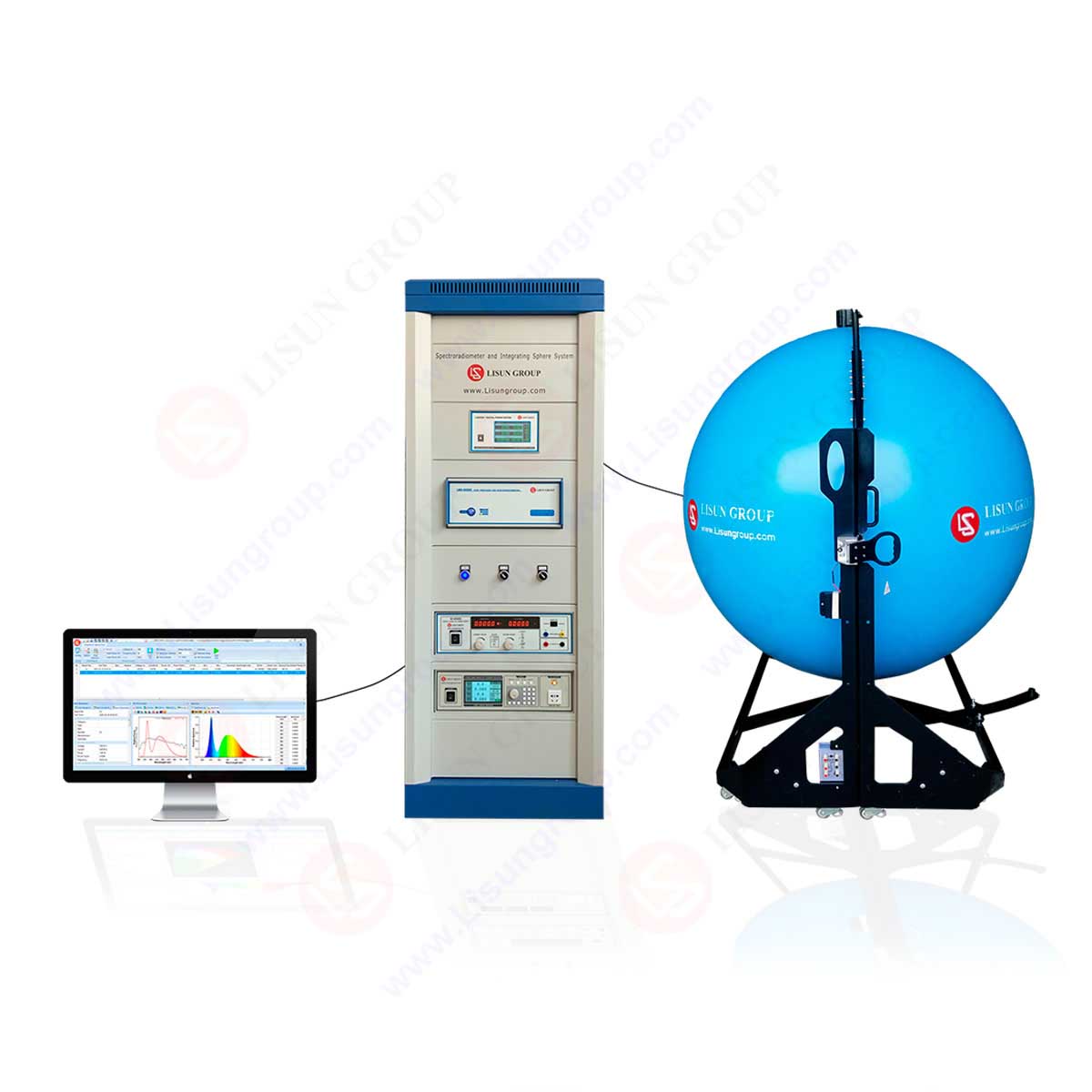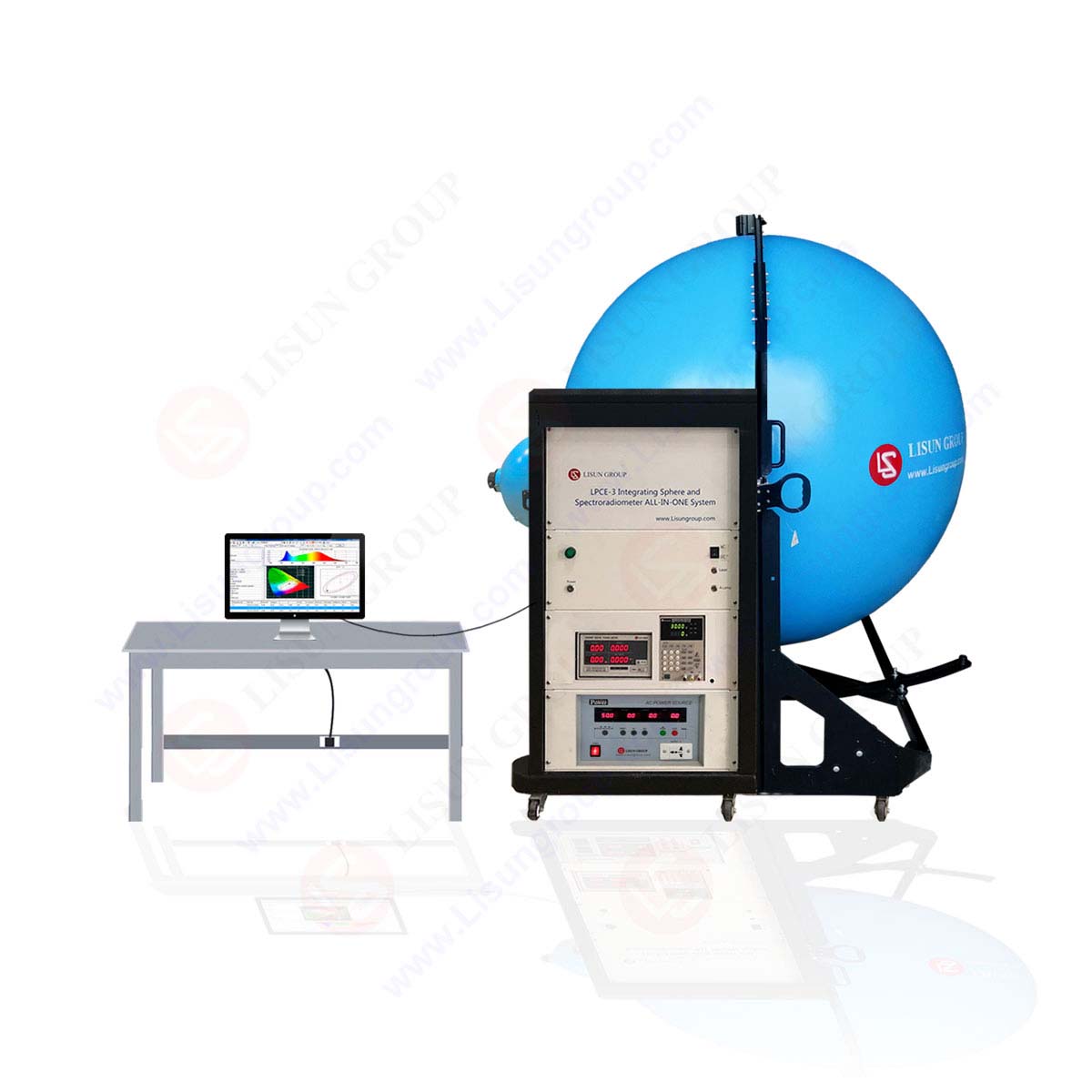The use of optical integrating sphere in measuring luminous flux can be traced back to 1890, and now it has become a widely used instrument in many aspects. The integrating sphere can be used to test the luminous flux, color temperature, luminous efficiency and other parameters of the light source. It is an indispensable instrument in the measurement of radiance, chromaticity and photometry
The optical integrating sphere is a hollow sphere coated with white diffuse reflective material on the inner wall, also known as the photometric sphere, the optical flux sphere, etc. The spherical wall is provided with one or several window holes, which are used as light inlet holes and receiving holes for placing light receiving devices. The inner wall of the integrating sphere shall be a good spherical surface, and its deviation from the ideal spherical surface is generally required to be no more than 0.2% of the inner diameter. The inner wall of the ball is coated with an ideal diffuse reflective material, that is, a material with a diffuse reflective coefficient close to 1.
Operating principle of optical integrating sphere:
After the light is incident from the input hole, the light is uniformly reflected and diffused inside the ball, so the light from the output hole is a fairly uniform diffuse beam. Moreover, the incident angle, spatial distribution and polarization of the incident light will not affect the output beam intensity and uniformity. Because the light is emitted only after the integration inside the integrating sphere, the integrating sphere can also be used as a light intensity attenuator. The ratio of the output intensity to the input intensity is about: the area of the optical output hole/the surface area inside the integrating sphere.
Function of the optical integrating sphere
1. Optical receiver
The measured light enters the sphere through the small hole on the integrating sphere, and one or two photodetectors are arranged on the inner wall. The photocurrent output by the photodetector is proportional to the illuminance of the inner wall of the integrating sphere. In this way, the change of luminous flux entering the integrating sphere can be known according to the change of output photocurrent.
2. Evenly illuminated surface
Several bulbs (usually four or six) are symmetrically and uniformly arranged on the inner wall of the integrating sphere and the light outlet. The light emitted by the bulb diffuses through the inner wall for many times to form a uniform and bright luminous sphere. The integrating sphere is used to measure the vignetting coefficient of the photographic objective lens and the uniformity of the image surface illumination.
3. Spherical collimator
The integrating sphere with a collimating objective, a bulb, and black and white stoppers is called a spherical collimator, which is used to measure the stray light coefficient of the telescopic coefficient. During the integrating sphere measurement, the illuminance of the blackbody target image and the “white stopper” image is measured by the photodetector, which is the corresponding indication value measured by the photodetector, and the stray light coefficient of the measured telescope can be calculated. Because, if the imaging of a black object in the bright sky by the telescope is not completely black, it means that in addition to imaging the object, the telescope also has stray light on the image plane.
How optical integrating spheres work?
1. Preparation: prepare an integrating sphere of appropriate size, a standard light source that is required to be close to the luminous flux of the light source of the lamp, and keep the ambient temperature at about 25 degrees, without any wind blowing into the integrating sphere;
2. Inspection: Install the standard light source to the center of the integrating sphere, connect the current source and power meter, and then light up the standard light source. Adjust to continuous test on the operation interface of integrating sphere software until the luminous flux reaches stability, and record its luminous flux value;
3. Calibration: The calibration operation is similar to the inspection, but the difference is that zero calibration is required before the standard light source is turned on. After the luminous flux is stable, input the standard color temperature and standard luminous flux of the standard light source in the operation interface of the integrating sphere software, and then click Start Calibration, and the integrating sphere tester will automatically complete the calibration;
4. Test sample: install the sample into the integrating sphere, light the sample, close the integrating ball, and start the test. Record the value after the luminous flux is stable.
LISUN lauched LPCE-2 Integrating Sphere Spectroradiometer LED Testing System is for single LEDs and LED lighting products light measurement. LED’s quality should be tested by checking its photometric, colorimetric and electrical parameters. According to CIE 177, CIE84, CIE-13.3, IES LM-79-19, Optical-Engineering-49-3-033602, COMMISSION DELEGATED REGULATION (EU) 2019/2015, IESNA LM-63-2, IES-LM-80 and ANSI-C78.377, it recommends to using an array spectroradiometer with an integrating sphere to test SSL products. The LPCE-2 system is applied with LMS-9000C High Precision CCD Spectroradiometer or LMS-9500C Scientific Grade CCD Spectroradiometer, and A molding integrating sphere with holder base. This sphere is more round and the test result is more accruacy than the traditional integrating sphere.
LPCE-3 is a CCD Spectroradiometer Integrating Sphere Compact System for LED Testing. It is suitable for single LED and LED luminaires’ photometric, colorimetric and electrical measurement. The measured data meets the requirements of CIE 177, CIE84, CIE-13.3, COMMISSION DELEGATED REGULATION (EU) 2019/2015, IES LM-79-19, Optical-Engineering-49-3-033602, IESNA LM-63-2, ANSI-C78.377 and GB standards.
Lisun Instruments Limited was found by LISUN GROUP in 2003. LISUN quality system has been strictly certified by ISO9001:2015. As a CIE Membership, LISUN products are designed based on CIE, IEC and other international or national standards. All products passed CE certificate and authenticated by the third party lab.
Our main products are Goniophotometer, Integrating Sphere, Spectroradiometer, Surge Generator, ESD Simulator Guns, EMI Receiver, EMC Test Equipment, Electrical Safety Tester, Environmental Chamber, Temperature Chamber, Climate Chamber, Thermal Chamber, Salt Spray Test, Dust Test Chamber, Waterproof Test, RoHS Test (EDXRF), Glow Wire Test and Needle Flame Test.
Please feel free to contact us if you need any support.
Tech Dep: Service@Lisungroup.com, Cell/WhatsApp:+8615317907381
Sales Dep: Sales@Lisungroup.com, Cell/WhatsApp:+8618117273997

 中文简体
中文简体







